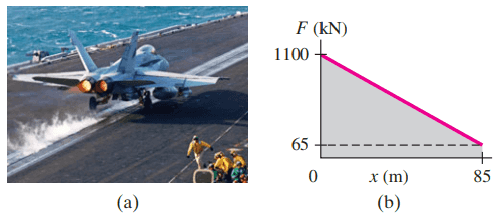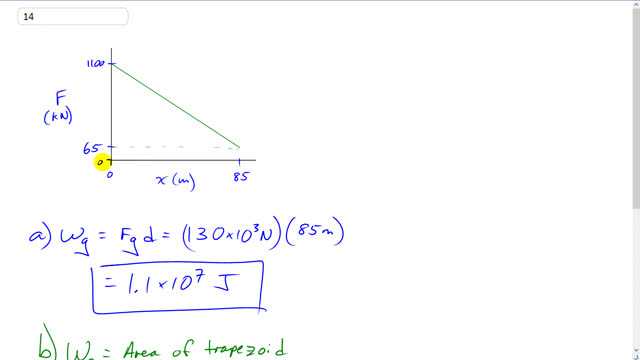
A 17,000-kg jet takes off from an aircraft carrier via a catapult (Fig. 6–39a). The gases thrust out from the jet’s engines exert a constant force of 130 kN on the jet; the force exerted on the jet by the catapult is plotted in Fig. 6–39b. Determine the work done on the jet:
- by the gases expelled by its engines during launch of the jet; and
- by the catapult during launch of the jet.


In order to watch this solution you need to have a subscription.
This is Giancoli Answers with Mr. Dychko. The work done by the gas is the force exerted by the gas times the displacement. And it looks like, the plane takes off over a distance of 85 meters here, according to this force displacement diagram for the catapult. And so the gas exerts a force of 130 kilonewtons, which is times 10 to the 3 newtons, times 85 meters which is 1.1 times 10 to the 7 joules of work done. And the force exerted by the gas is in the same direction as the displacement so that work is positive. The work done by the catapult is the area of this trapezoid; that's the area shaded in yellow here, everything underneath that curve. And the area of the trapezoid is the height of one side plus the height of the other side divided by 2 and then multiplied by the base. So we have, 1100 times 10 to the 3 newtons, on the one side, plus 65 times 10 to the 3 newtons, on the other side; divide that total by 2, we multiply it by 85 meters for the base of the trapezoid, and we get 5.0 times 10 to the 7 joules is the work done by the catapult.